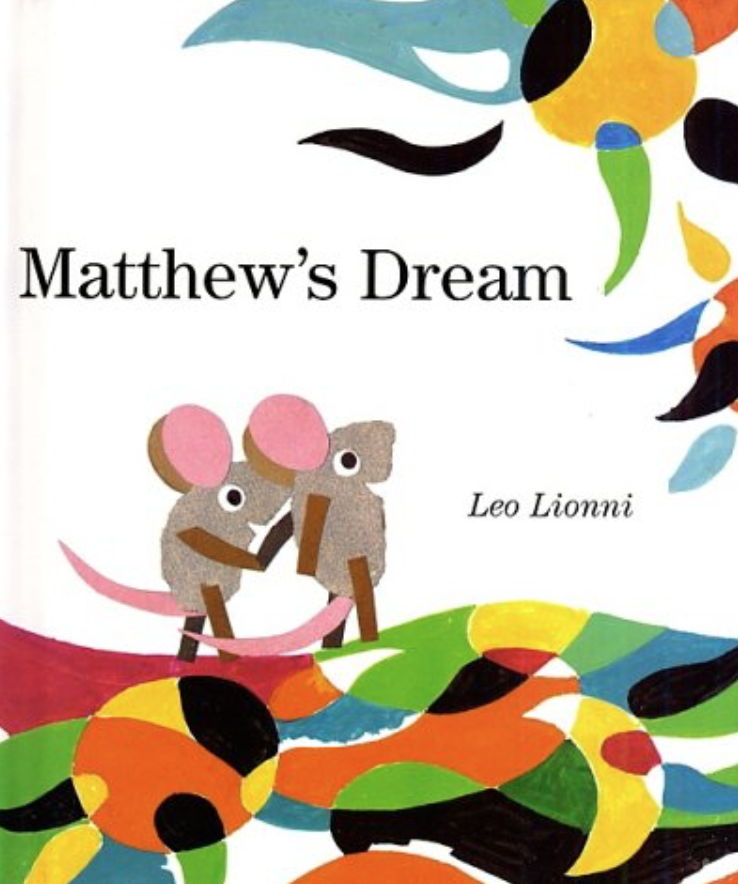Matthew’s Dream
Book Module Navigation
Summary
Matthew’s Dream examines many philosophical concepts including art and aesthetics, inspiration, and judgment.
A poor mouse couple lives in a dusty attic where they have great hopes for their only child. When they ask Matthew what he wants to be, however, he is uncertain–until the day his class goes on a field trip to the art museum.
Read aloud video by Mrs. Halstead
Guidelines for Philosophical Discussion
There are many philosophical concepts in the book Matthew’s Dream. Some of the more prominent ones are art and aesthetics, inspiration, and judgment. These are topics for which there are many different views, so they encourage fruitful discussion.
One of the philosophical issues the book brings up is the concept of beauty in reference to the artwork in the story. How do we come to possess the insights required to decide what is and is not aesthetically beautiful? Because art is so elusive and difficult to define, people have very different concepts of it. Therefore, many of the questions are designed more to get children to explore the idea of what constitutes art.
Many believe that art is an expression of an artist, but others emphasize the viewer’s appreciation of it. Is the artist or the viewer more central to the work? This is an issue that philosophers continue to discuss. In addition, many philosophers have argued that works of art have to be beautiful. Can something that is not aesthetically pleasing still be considered art?
The concept of inspiration comes up after Matthew visits the museum. This set of questions is designed to get children thinking about what inspires someone. Will the same things inspire everyone and if not, why not? Sometimes a particular experience will suddenly enable us to see things differently, just like Matthew and his corner in the attic. How can something that he saw as junk the day before suddenly be viewed so differently when it is the exact same stuff? Does this fit the old saying “beauty is in the eye of the beholder”?
Another important issue to discuss is the nature of artistic interpretation. Appreciation is often influenced by knowledge. Can we appreciate something if we do not understand it? Can we drop all of our preconceptions and just experience the work itself?
Discussing the various aspects of what constitutes art allows children to better understand that there is not necessarily a right and wrong when dealing with art. A discussion of these questions allows children to approach and view artistic works in a different way. A trip to a local museum would be a great way to follow up this discussion.
Questions for Philosophical Discussion
Matthew is very impressed when he goes to the art museum for the first time.
- If you draw, color, or paint, does that make you an artist?
- If someone is passionate about their artwork, does that make them an artist?
- Do you consider yourself an artist?
- Does your work need to be in a museum for you to be considered an artist?
- Could a child’s artwork be in a museum?
When Matthew goes to the museum, he says, “The world is all here.”
- What did he mean by that?
- Could the whole world actually be in one building?
- Is it possible for a museum to have a representation of the whole world in it?
Matthew goes to the museum and is inspired to become an artist after looking at all of the art work there.
- What does it mean to be inspired?
- Have you ever done or saw something that inspired you?
- Do you have to have inspiration to make good art?
- Can art be made without inspiration?
- Does something have to be good to inspire you? Why or why not?
- Is it good if it doesn’t look like anything recognizable?
The book shows several different pieces of art from the museum.
- Does something have to be man made to be considered art, or can it come from nature?
- Does something have to evoke a feeling in order for it to be considered art?
- What if you see something different than what the artist meant for you to see? Is that okay?
- If someone really likes a piece of art, and another person really dislikes it, can it still be considered a piece of art?
- Can two people interpret the same thing differently and both be right?
Not all art is realistic.
- What is abstract art?
- What makes it abstract?
- When you look at a piece of art, especially an abstract piece, does everyone have to see the same thing in it?
- Can you think of any other types of art other than paintings?
After visiting the museum, Matthew is able to see his dark, dreary corner in the attic in a new way.
- If it was still the same old newspapers, magazines, broken lamp, and doll parts, how was Matthew able to view it differently?
- What made it possible for him to see things differently?
- Can something messy, broken, or junky also be beautiful, and if so how?
Original questions and guidelines for philosophical discussion by Kate Vigour and Nancy Soudant. Edited June 2020 by The Janet Prindle Institute for Ethics.
Find tips for leading a philosophical discussion on our Resources page.







